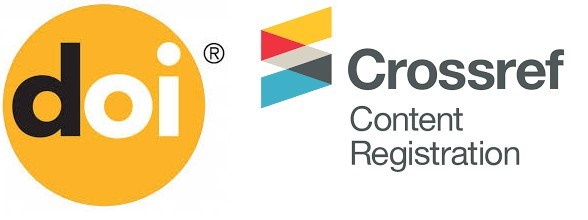Kemampuan Bahasa Arab dalam Pandangan Perilaku Keagamaan dan Kemampuan Menulis Arab (Kha>t)
DOI:
https://doi.org/10.32699/liar.v3i01.994Keywords:
Mastery of Khat, Religious Behavior, Arabic Language SkillsAbstract
Writing is one of the very penting.melalui language skills to write someone will be able to more easily convey the message in writing and can understand and remember the message from a script or text. However, writing the Arabic language itself is inseparable from the ability to master handwriting}. Without an understanding of khat} good, allows a person to experience an error in writing the Arabic alphabet even in understanding the message of an Arabic text. The purpose of this study was to determine how much influence the ability of the Mastery of Arabic handwriting and religious behavior of a person.
References
Abd. Azis Ahmad, Ragam Karakter Dalam Kaligrafi Islam, (Jakarta: Amzah , 2006) edisi ke 2.
Ancok Djamaludin & Nashori Fuad Suroso, Psikologi Islami, (Yogyakarta: Pustaka Pelajar, 1994).
Ancok Djamaludin, Psikologi Islam Solusi Islam atau Problem-Problem Psikologi, (Yogyakarta: Pustaka Pelajar, 1994).
Arifin H.M. Psykologi Dakwah (Jakarta: Bulan Bintang. 1972)
Hermawan Acep, Metodelogi Pembelajaan Bahasa Arab. Cet ke IV (Bandung: Remaja Rosdakarya, 2014) .
Kadir Bahri Saiful.“Fann al-Khat al-‘Arabiy ar-Riq’iy wa mumayyizatuhu baina al-Khutut al-‘Arabiyyah al-ukhra” Skripsi pada Jurusan BSA Fakultas Adab IAIN Sunan Kalijaga Yogyakarta, tahun 1986.
Madkur Ahmad ‘Ali, Tadris Funun al-Lugah al-‘Arabiyyah (Kairo; Dar al-Fikr al-‘Arabiy, 2000).
Sukamto Mauludin dan Munawir Ahmad. Tata Bahasa Arab Sistematis. Yogyakarta: Norma Media Idea. 2004.
Ta’imah Ahmad Rusydi, Al-Marja’ fî ta’lîm al-Lugah al-‘Arabiyyah li anNathiqina bilugatin ukhra, Jilid Dua (Saudi Arabia: Diktat Kuliah Jami’ah Umm al-Qura, Tt.).
Downloads
Published
Issue
Section
License
Authors who publish with this journal agree to the following terms:
a. Authors retain copyright and grant the journal right of first publication with the work simultaneously licensed under a Creative Commons Attribution-ShareAlike 4.0 International License. that allows others to share the work with an acknowledgement of the work's authorship and initial publication in this journal.
b. Authors are able to enter into separate, additional contractual arrangements for the non-exclusive distribution of the journal's published version of the work (e.g., post it to an institutional repository or publish it in a book), with an acknowledgement of its initial publication in this journal.
c. Authors are permitted and encouraged to post their work online (e.g., in institutional repositories or on their website) prior to and during the submission process, as it can lead to productive exchanges, as well as earlier and greater citation of published work (See The Effect of Open Access).












